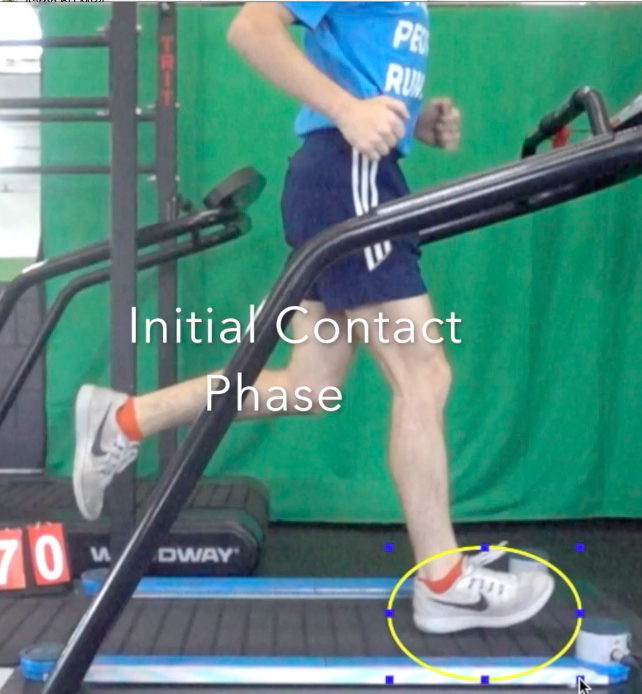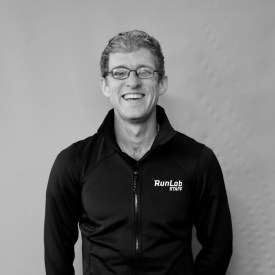Ever wondered “what the heck is a gait cycle?”
“Lengthen out your stride”, “Shorten your stride”, “Pick up your knees”, “Heel striking is bad”, “Run on your toes and fall forward”, “Your glutes aren’t firing”, “Barefoot running is the most natural type”, “Max cushion will prevent injury”….and on and on and on….
Most of us have heard throughout our lives there is a correct way to run. This “correct way” tends to change every few years along with the shoe industry, and advocates will swear by each new truth. It is not surprising that runners are so confused on what they should focus on when they are out running.
The fact is, there is no one correct way to run. Everyone is unique in both their underlying physiological attributes, including structure, strength, and range-of-motion as well as in their goals.
The key to running with your best form is to gain as much understanding about your unique body, and about running, as possible. This basis of awareness starts with an understanding of the phases of the gait cycle. Understanding the gait cycle and basic running mechanics is the framework to beginning any running-specific training program. A foundation built of sound biomechanical patterns is imperative before adding volume and intensity to the mix. If you do not move efficiently, you greatly raise your probability of getting injured.
The term gait cycle is used to describe one revolution of the body when walking, running, or sprinting. The pieces of the gait cycle can be broken down into an infinite number of parts, with the most basic version involving four stages.
FIRST STAGE
Initial Contact: The initial moment your foot hits the ground.
SECOND STAGE
Initial Loading Response/Midstance: Load acceptance phase of the gait cycle. All of your body weight is on one leg. Your body is trying to control three to ten times your body weight in force.
THIRD STAGE
Push-off: Hip extending behind you which drives your body forward.
FOURTH STAGE
Swing: Should include a “flight phase.” Your leg swings through the air preparing to make contact with the ground again to complete the gait cycle.
Understanding the gait cycle at a basic level is important for any runner, so you won’t have to ever wonder what the heck is a gait cycle again! Improving efficiency will both lower the probability of injury and enhance running performance due to decreasing aberrant load on the body and decreasing the recruitment of muscles not meant to accept load or push your body off the ground. We find that many of our injured runners have ended up injured because they have tried to change something about the way they run without really knowing why they are making the change. Your gait cycle is as unique to you as your fingerprint and you should never make any type of change without fully understanding both why you are making the change and how it will affect other parts of your body. It is very easy to fall into the trap of reading something about the “right” way to run and trying to modify your movements without truly understanding how your structure, range-of-motion, strength, injury history, neuromuscular control, and goals play into ideal mechanics specific to you.
TAKE-HOME MESSAGE:
- Your unique gait cycle is determined by a myriad of factors, including morphologic and physiologic factors. Anatomic structure, range of motion, strength, endurance, coordination, elastic energy return, symmetries between right and left, injury history, and workout history all affect the way you move.
- Changing running form without context and a deep understanding of the biomechanical factors unique to you can result in decreased efficiency and even injury. There is no “one-size-fits-all” model when analyzing movement mechanics or determining running form ideal for an individual.
- Do not change your running form if you do not know why you are trying to change something or how it will affect the rest of your body. Every change, no matter how minute, will affect the entire body. This can be good or bad, depending on many factors and what your specific goals and limiters are.
- Analyzing the gait cycle is a lot like statistics. A data set is gathered, but that data set must be analyzed and interpreted relative to the specific case to determine its relevance.
- Your gait cycle is unique to you. If you enjoy running and would like to lower your probability of being injured, consider getting your gait cycle analyzed by professionals. You have coaches or teachers for almost every other aspect of your life. Why not running? Be wary and do your homework. If someone tells you there is a “right” way to run, doesn’t do a structural, strength, and range-of-motion assessment on your full body, or tell you a shoe can “fix” your issues then that person does not truly understand biomechanics enough to help you.
Thank you for taking the time to read our RunLab™ Blog! We hope that you use this information to run more injury free and to optimize your running performance.
For more information about the RunLab™ team and to get your running stride analyzed by one of the preeminent gait specialist teams in the country, please visit WWW.RUNLABAUSTIN.COM
Outside of the Austin area? You can still have your running stride analyzed by one of the best teams in the country. Just visit WWW.RUNLAB.US to see where our partner filming locations are based or choose the self-film option.
RunLab™. Helping runners help themselves.
ABOUT LORIN WILSON
Lucky enough to be a part of a great running program in high school, Lorin not only went on to win the 2007 Texas 4a State Championship in the mile but also went on to earn a track scholarship to the University of Texas at Austin. Lorin graduated from the The University of Texas at Austin with a major in Exercise Science and a minor in business. While still attending UT, he began coaching distance running at St. Stephen’s Episcopal school where he would coach student-athletes to break school records in the 400 meter, 800 meter, 1600 meter, 3200 meter, 5000 meter, 4×400 meters, and 4×800 meters. After graduating from UT and during his aforementioned tenure at St. Stephen’s, Lorin also worked for the local Austin non-profit Power For Parkinson’s as a fitness instructor, which provides free fitness programs for individuals with Parkinson’s disease. No longer a trainer at Power For Parkinson’s, Lorin does fundraising campaigns for Power For Parkinson’s. During this period he also started BlueSky Running LLC, which provided on-site Yoga programs for employees of the Austin Independent School District (teachers, administration, bus drivers etc).
Lorin has the following physical training certifications: National Academy of Sports Medicine (NASM) Certified Personal Trainer, Performance Enhancement Specialist (NASM), Corrective Exercise Specialist (NASM), Senior (elderly individuals) Fitness Specialist (NASM), Fitness Nutrition Specialist (NASM), RunLab Clinical Gait Specialist, USA Track & Field Level 1 Coach, and a USA Yoga Alliance 200 Hour Certified Yoga Instructor certification earned while studying in Rishikesh, India. Lorin is a MBA Graduate with an emphasis in Accounting from Texas State University. He was also the President of the Texas State MBA Student Association and a Future Texas Business Hall of Fame Scholarship Recipient.
Lorin has a marathon best of 2:37:05 (5:59 per mile pace) run at the 2011 Los Angeles Marathon. He ran his first 100 miler in 17 hours 30 minutes (10:15 per mile pace) in Flagstaff, Arizona in September 2018. He ran the 2019 Boston Marathon in 2:37:59. He also has three top 10 finishes (5th, 7th, and 10th) in the Capital 10,000, the largest 10k in Texas, with the latest two being 2016 and 2017. Lorin looks forward to working towards his goal of making high-quality fitness accessible to everyone while he continues to train for 100 mile races.

LEARN MORE:
RunLab™ Podcast RUN.
RunLab™ YouTube channel





